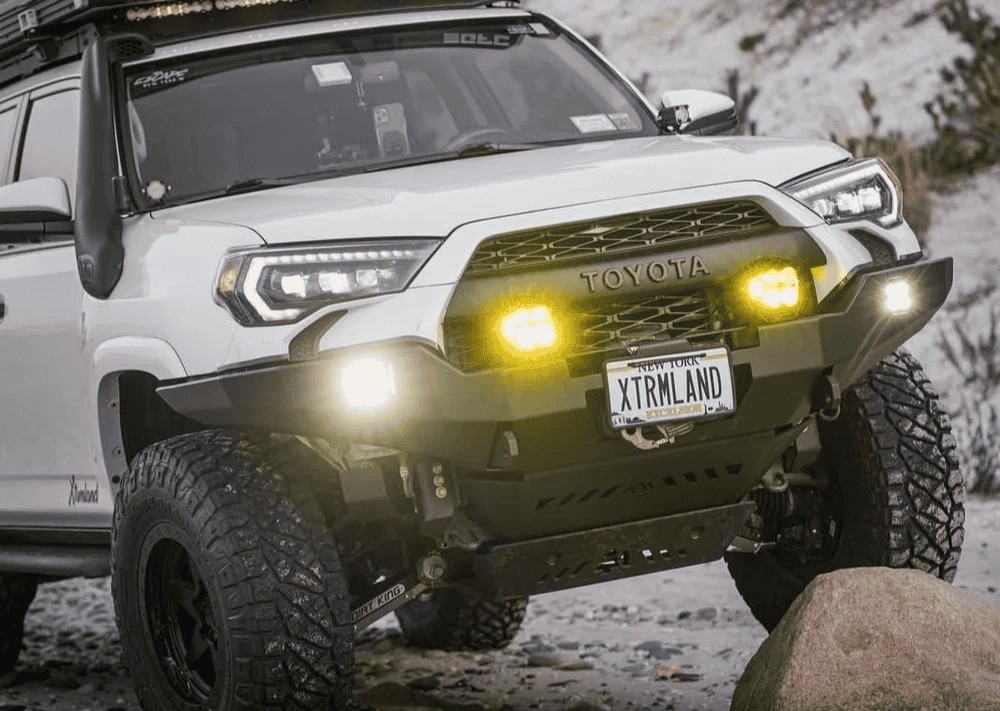Overland Vehicles

Dual use travel configuration describes a vehicle interior that toggles from commute and school runs to camping and long distance travel with minimal effort. The goal is rapid reconfiguration, not a permanent conversion that locks you into one purpose. Think modular furniture, quick release mounts, and storage that works just as well for groceries as it does for climbing ropes or fly rods.
At the center of this approach is time. Swapping modes should take minutes, not hours. That means selecting components that lift out without tools or glide on rails and latches. It also means predictable anchor points and repeatable setups, so your bed platform aligns the same way every time and your galley lands on its power and water connections without fuss.
Safety and longevity matter. A flexible interior still needs weight distributed low and forward, hardware tied to factory points, and furniture trimmed from lightweight but durable materials. Done right, the vehicle stays quiet, solid, and easy to maintain across thousands of miles.
Design starts with zones. Up front is seating and work. Midship is living and storage. Aft is cargo and sleep. Many builds use a convertible rear area where a platform bed folds or stows to open a gear bay. Others use a raised deck with removable panels that reveal bike trays or tote slots underneath.
Smart seating can do double duty. Swivel bases create a lounge without stealing floor space. Removable jump seats maintain people hauling capacity when needed. If extra seats are installed, they must be properly rated and anchored to meet safety requirements.
Cooking benefits from portability. A slide out galley with a cassette water setup and a portable induction or single burner stove keeps weight down and surfaces easy to clean. When the vehicle returns to weekday mode, the galley rolls out and the load floor is ready for work.
Storage is the heartbeat of a flexible system. Overhead cabinets should be shallow and light. Vertical wall tracks and floor rails accept tie downs, bike fork mounts, ski clamps, and cargo rings. Soft bins and stackable totes tame loose items and prevent rattles. For quick swaps, color coded bins for sleep, cook, and ride kits make packing automatic.
Power should be simple yet capable. A compact secondary battery with a DC to DC charger covers fridges, fans, and lights. Add shore input or portable solar if you stay off grid longer. Keep wiring modular with clearly labeled connectors so removable gear can be unplugged fast. Ventilation is equally important. A roof fan or screened windows control moisture, odors, and temperature without running the main engine.
Water systems can stay nimble. Portable jugs with quick connects reduce winterization chores and lighten the vehicle when you are not traveling. A small gray container under the sink or outlet keeps camps compliant and emptying straightforward.
Materials shape how the rig feels over time. Lightweight plywood, aluminum extrusions, and honeycomb panels resist swelling and squeaks. Edges rounded by CNC and sealed with marine finishes clean up easily after muddy trail days. Fabrics should be durable and removable for washing.
Mind the weight. Start with the curb weight and payload rating, then budget for passengers, water, fuel, and gear. Keep heavy items low, secure, and forward of the rear axle to preserve handling and braking. Confirm clearances so cabinets do not interfere with airbags or seat mechanisms.
Anchoring is nonnegotiable. Use brackets and plates designed for factory tie points or reinforced locations. Tool free does not mean unsecured. Quick release fasteners, quarter turn locks, and cam latches can be both fast and strong when installed correctly.
Test before you commit. Load the vehicle for a weekend and track what you touched, what you never used, and what annoyed you. Trim the kit. Add organizers. Adjust bed height for the taller cooler or the longboard. The best dual use travel configuration evolves through these small feedback loops.
A well planned flexible layout saves time every single trip. Professional upfitters streamline the decisions that protect safety and comfort, from seat hardware choices to quiet interior finishes. If your plans include off pavement travel, heavier electrical loads, or integrated climate control, expert fabrication and clean wiring become especially valuable.
OZK Customs designs and builds flexible interiors that move from weekday utility to weekend travel without drama. From modular beds and rail systems to compact power and ventilation, our team focuses on clean installs, safe mounting, and materials that wear well. We are based in Fayetteville, Arkansas and serve travelers who want a rig that switches roles fast yet feels refined on the road.
Bring your wish list, your gear, and your routes. We will map a dual use plan that fits your vehicle, anchors securely, and changes over in minutes. Start by browsing ideas on overland rigs, then read more about our approach on why choose OZK Customs or head to the home page.
Ready to build a vehicle that works hard during the week and travels even harder on the weekend? Talk with OZK Customs about a dual use travel configuration that fits your gear, your crew, and your routes. Visit our shop in Fayetteville, Arkansas or schedule a consult to map your layout, power, and storage. Submit the form to start your custom plan.
Ready to build a vehicle that works hard during the week and travels even harder on the weekend? Talk with OZK Customs about a dual use travel configuration that fits your gear, your crew, and your routes. Visit our shop in Fayetteville, Arkansas or schedule a consult to map your layout, power, and storage. Submit the form to start your custom plan.
ADDRESS:
6159 E Huntsville Rd, Fayetteville, AR 72701
PHONE:
(479) 326-9200
EMAIL:
info@ozkvans.com